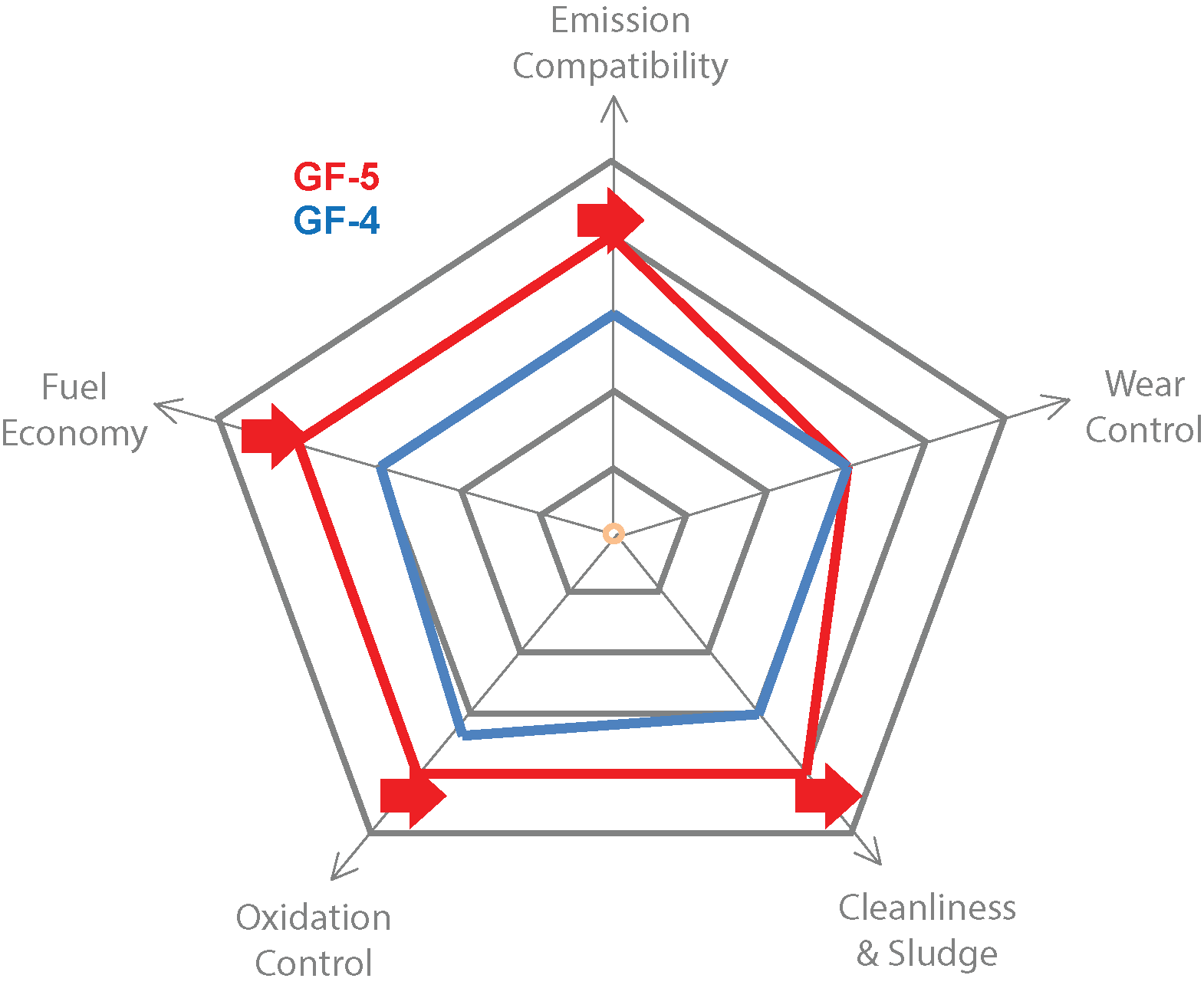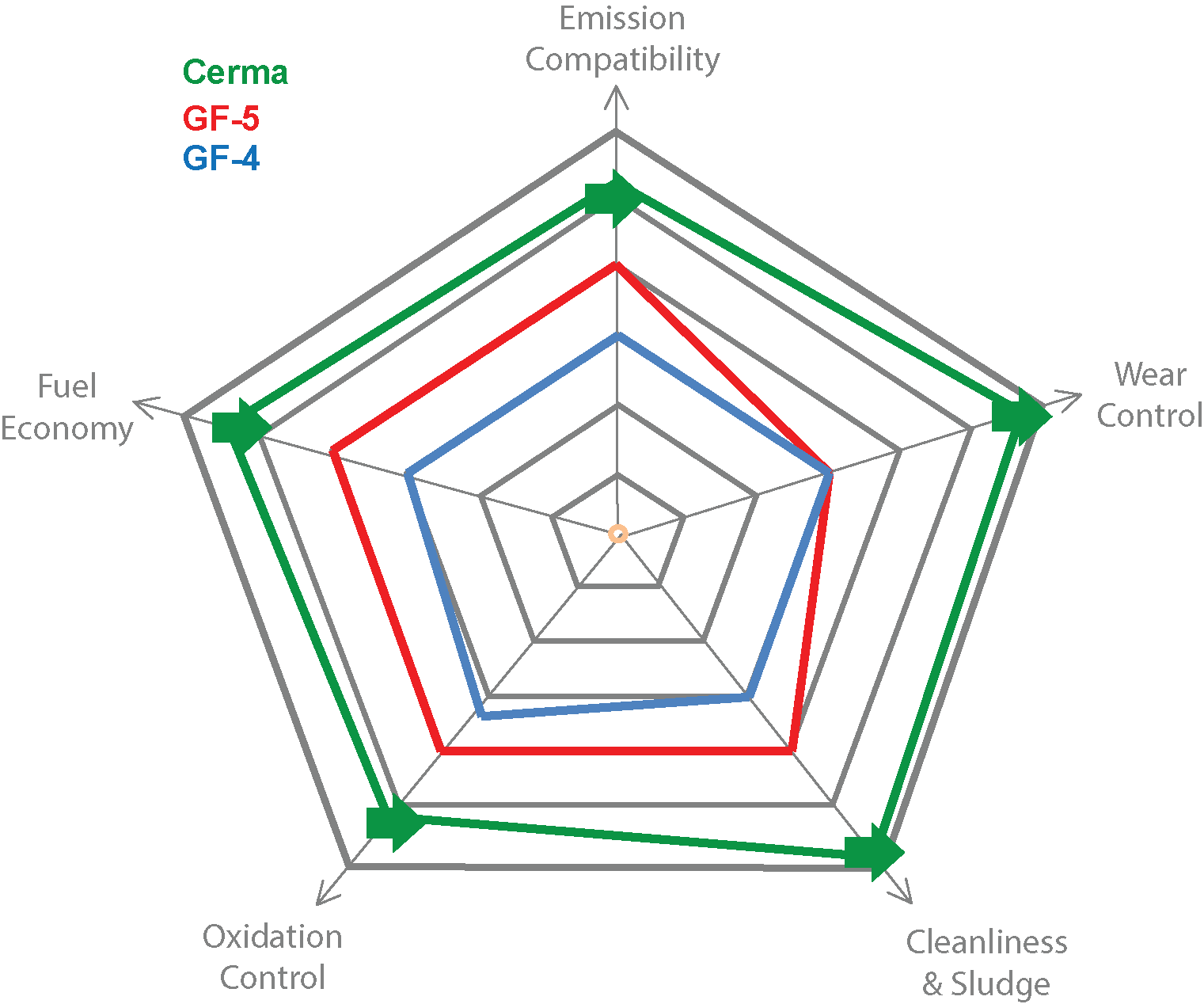- Cerma Motor OIl
- Oil Comparison
- Motor Oil Myths
- Cerma vs Present
- Cerma vs New
- White Paper
- Engine Wear
Cerma versus the Present Oil Standards
To download in pdf - Click Here
PRESENT API SN-RC and ILSAC GF-5 SPECIFICATION
As of October 1, 2010, three new passenger car motor oil categories were established. ILSAC GF-5 supersedes ILSAC GF-4, and API SM is replaced by two categories, API SN and API SN Resource Conserving. API SM is very similar to ILSAC GF-4, but does not include the fuel economy and some of the bench tests required in ILSAC GF-4. API SN is very similar to ILSAC GF-5 but does not include the fuel economy and some of the bench tests required in ILSAC GF-4.
The chart below is a simplified comparison of the new categories.

The comparison described below for ILSAC GF‐4 to ILSAC GF-5 is essentially the same comparison as API SM to API SN.
Passenger car/light truck engine lubrication requirements continue to focus on three core areas: Improved fuel economy & fuel economy retention, improved emission system compatibility, and improved engine oil life or robustness. These increasing performance demands follow step in step changes with engine hardware & technology to meet consumer and ever more stringent regulatory demands.
ILSAC GF-5 has three significant areas of improvement over GF-4:
1. Emission System Compatibility (Seq IIIG phosphorous retention)
2. Oil Robustness (Seq IIIG WPD, TEOST MHT and 33C, E85 emulsion)
3. Fuel Economy (Seq VI-‐D)
ILSAC’s GF-5 standard was issued to the industry in December 2009 with first market use being October 1, 2010 and the last market use for ILSAC GF-4 being September 30, 2011.
Each of these three areas of significant improvement for a GF-5 motor oil can be described more specifically as follow.
1. Emissions System Compatibility. All engines burn a small amount of oil that leaks past rings and valve guides. Some of the chemicals in motor oil can form a glassy coating on catalytic converter surfaces, which reduces the converters efficiency. GF-5 has a provision to assure that motor oils are less harmful to catalytic converters.
2. Oil Robustness. New engine technologies are being implemented by automakers to improve fuel economy, emissions reduction, and engine performance. Advances such as variable valve timing, cylinder deactivation, and turbochargers are some of the most frequently employed technologies. The performance of these technologies relies on the motor oil maintaining it’s “like new” characteristics as long as possible. Some of these technologies use motor oil as the hydraulic fluid to operate them and have fine screens to operate them. It is important that the motor oil prevents deposits that can clog these screens. Turbochargers, also lubricated by motor oil, can operate at very high temperatures. GF-5 has more stringent requirements for resistance against oil deterioration and deposit formation to protect these new engine technologies.
3. Fuel Economy. Improvements in fuel economy for GF‐5 are important to preserve fossil fuels, reduce imports of costly petroleum, prevent pollution, and minimize our impact on global warming.
Cerma Industries committed to providing our customers with high quality products that meet or exceed our customers’ demands and the highest industry standards and that commitment is why we are introducing our new Cerma STM-3 motor oil line. Cerma STM-3 motor oils are premium quality motor oils that exceed the requirements of API SN-RC/ILSAC GF-5.
The diagram below illustrates the differences in the new GF‐5 specification vs. the previous ILSAC GF‐4 specification. As you can see, GF‐5 provides improved performance in a number of important aspects compared with GF‐4. Cerma STM-3 motor oils utilize latest generation of additive technology to cope with the unique demands of this new generation of motor oils including the unique engine oil requirements of both low friction designs and improved combustion efficiency engines.

Cerma STM-3 Motor Oils were developed with maximum performance technology and exceed the latest car manufacturers’ GF‐5 performance standards. The diagram below illustrates how Cerma STM-3 provides better emission compatibility, improved wear & oxidation control, and better cleanliness & sludge protection than the required ILSAC GF‐5 specification.



